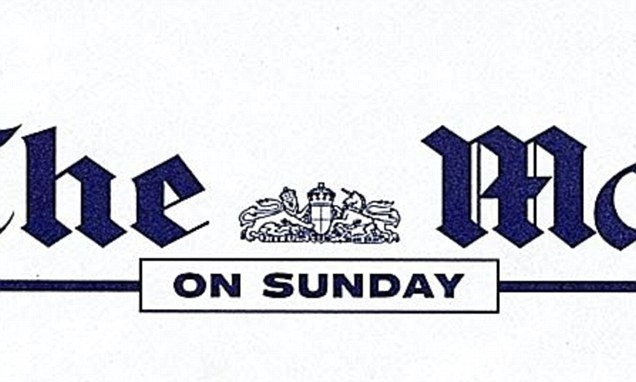How To Issue Corrections And Clarifications Effectively

Table of Contents
Corrections and clarifications, while often used interchangeably, have subtle differences. A correction addresses a factual inaccuracy, while a clarification addresses a potential misunderstanding or misinterpretation of information. Both are essential tools for maintaining transparency and building trust with your audience. This article aims to provide you with the strategies needed for effective issuing corrections and clarifications, ultimately helping you safeguard your reputation, restore trust, and avoid potential legal issues.
Identifying the Need for a Correction or Clarification
Before issuing any correction or clarification, you must first identify the need. This involves recognizing errors and assessing their severity and potential impact.
Recognizing Errors and Misinformation
Errors can manifest in various forms:
- Factual inaccuracies: Incorrect dates, names, figures, or statistics.
- Misleading statements: Information presented in a way that creates a false impression.
- Outdated information: Data or facts that are no longer current or relevant.
- Omitted information: crucial details left out which alters the meaning or context.
Identifying these errors requires a robust fact-checking process. This includes:
- Employing multiple sources for verification.
- Implementing internal review processes before publication.
- Actively soliciting feedback from your audience through comments, emails, and social media monitoring. Effective error detection relies on a multi-pronged approach to information verification.
Assessing the Severity and Impact
Once an error is identified, assess its severity and potential impact:
- Scope of the error: How widespread is the inaccurate information?
- Potential harm: What are the potential consequences of the error (e.g., financial loss, reputational damage, legal action)?
- Audience reach: How many people have seen or been affected by the inaccurate information?
Prioritizing corrections is essential. A small error on a niche blog post might require a simple correction on the page, while a significant inaccuracy reported widely across multiple media outlets demands a more substantial response, potentially including a press release and social media engagement. Proper risk assessment is crucial in determining the necessary response.
Crafting an Effective Correction or Clarification Statement
Crafting a well-written correction or clarification is as crucial as identifying the problem. It needs to be concise, clear, and acknowledge the error.
Writing a Concise and Clear Statement
Clarity is key. Use:
- Active voice: Makes your writing more direct and engaging.
- Simple language: Avoid jargon and technical terms; opt for plain language that's easily understood by a broad audience.
- Short sentences and paragraphs: Improve readability and comprehension.
Plain language ensures your message is accessible to diverse audiences, maximizing the effectiveness of your correction or clarification.
Acknowledging the Error and Taking Responsibility
It's vital to take ownership of the mistake. Use language that demonstrates accountability:
- "We regret to inform you that…"
- "We have identified an error in…"
- "Our previous statement contained inaccurate information…"
Avoid blame-shifting or making excuses. Transparency and accountability are key to restoring trust and mitigating potential damage.
Providing Accurate Information
The corrected information must be accurate and verifiable. Provide:
- Updated facts and figures
- References to reliable sources
- Context to clarify any misunderstandings
Ensure the corrected information is readily accessible and easily understood by your audience.
Choosing the Right Channels for Dissemination
Disseminating your correction or clarification requires identifying your audience and choosing the appropriate communication channels.
Identifying Your Audience
Different audiences require different communication strategies:
- Website visitors: Update the original content with a prominent correction.
- Social media followers: Post a correction on relevant platforms, tagging any individuals or organizations involved.
- Media outlets: Issue a press release or contact journalists directly.
- Email subscribers: Send a targeted email notification.
Utilizing Appropriate Platforms
Consider the pros and cons of each channel:
- Website: Provides a permanent record of the correction.
- Social media: Allows for rapid dissemination and engagement with your audience.
- Email: Enables direct communication with specific individuals or groups.
- Press release: Suitable for widespread dissemination of significant corrections.
Strategic use of these platforms ensures your correction reaches the intended audience effectively.
Conclusion: The Importance of Effective Corrections and Clarifications
Issuing timely, accurate, and transparent corrections and clarifications is vital for maintaining credibility and building trust. By acknowledging errors, taking responsibility, and communicating effectively, you can mitigate reputational damage and protect your brand's image. This proactive approach to error correction demonstrates your commitment to accuracy and accountability, fostering stronger relationships with your audience. By mastering the art of issuing corrections and clarifications effectively, you can protect your reputation and build lasting trust with your audience. Start implementing these strategies today!

Featured Posts
-
 Faltan 3 Dias Inscribete A Tus Clases De Boxeo En Edomex
Apr 30, 2025
Faltan 3 Dias Inscribete A Tus Clases De Boxeo En Edomex
Apr 30, 2025 -
 Rekord Ovechkina Kommentariy Zakharovoy
Apr 30, 2025
Rekord Ovechkina Kommentariy Zakharovoy
Apr 30, 2025 -
 Kynyda Ke Ayndh Eam Antkhabat Antzamy Kam Mkml
Apr 30, 2025
Kynyda Ke Ayndh Eam Antkhabat Antzamy Kam Mkml
Apr 30, 2025 -
 1050 Price Hike On V Mware At And T Sounds The Alarm On Broadcoms Acquisition
Apr 30, 2025
1050 Price Hike On V Mware At And T Sounds The Alarm On Broadcoms Acquisition
Apr 30, 2025 -
 Eurovision Village 2025 Basels Funding Approval And What It Means
Apr 30, 2025
Eurovision Village 2025 Basels Funding Approval And What It Means
Apr 30, 2025
Latest Posts
-
 Key Moments Duponts Masterclass Secures Frances Win Over Italy
May 01, 2025
Key Moments Duponts Masterclass Secures Frances Win Over Italy
May 01, 2025 -
 France Vs Italy Rugby A Detailed Match Report Featuring Dupont
May 01, 2025
France Vs Italy Rugby A Detailed Match Report Featuring Dupont
May 01, 2025 -
 Neispricana Prica O Prvoj Ljubavi Zdravka Colica
May 01, 2025
Neispricana Prica O Prvoj Ljubavi Zdravka Colica
May 01, 2025 -
 Duponts Impact France Dominates Italy In Rugby Match
May 01, 2025
Duponts Impact France Dominates Italy In Rugby Match
May 01, 2025 -
 Rugby Highlights Duponts Key Role In Frances Victory
May 01, 2025
Rugby Highlights Duponts Key Role In Frances Victory
May 01, 2025
